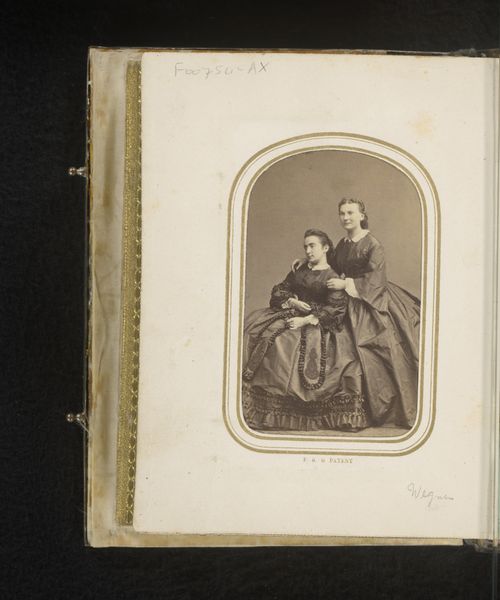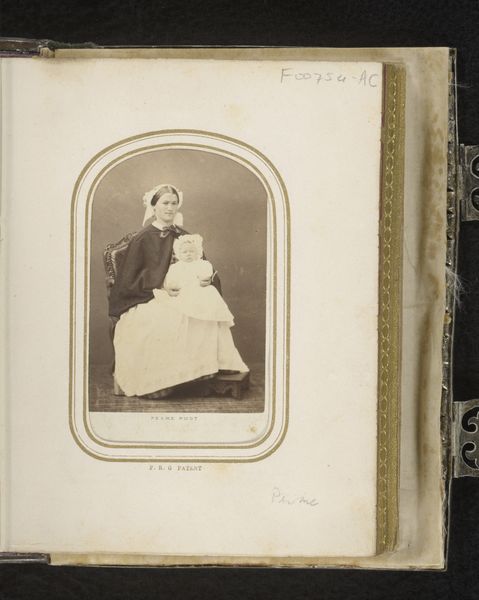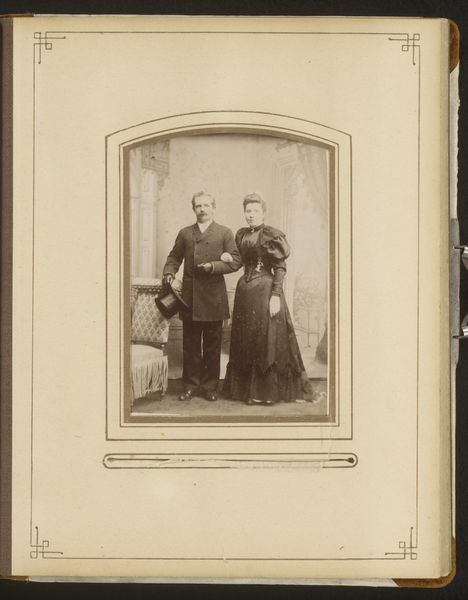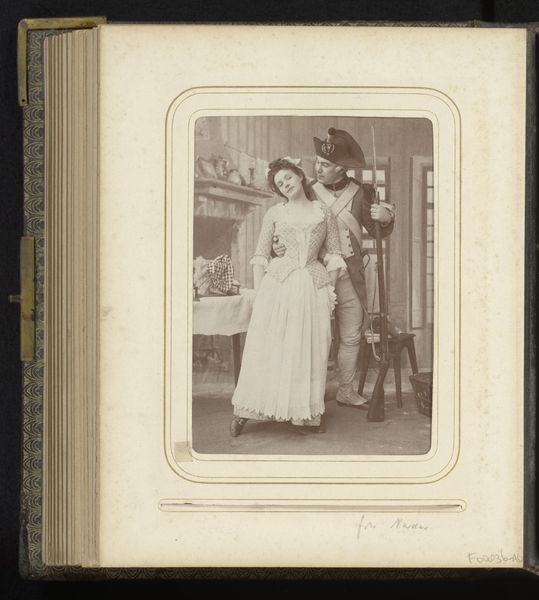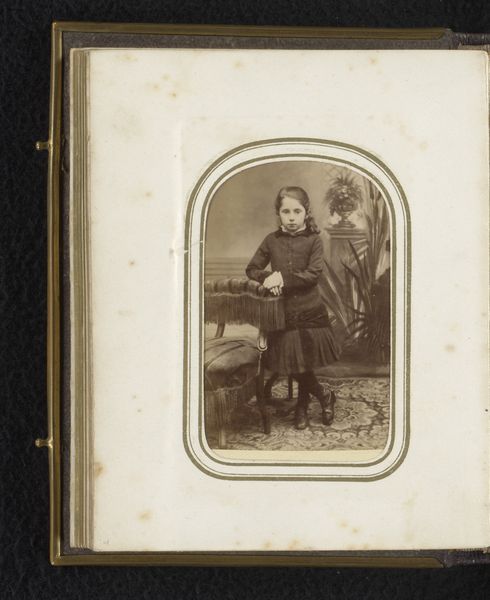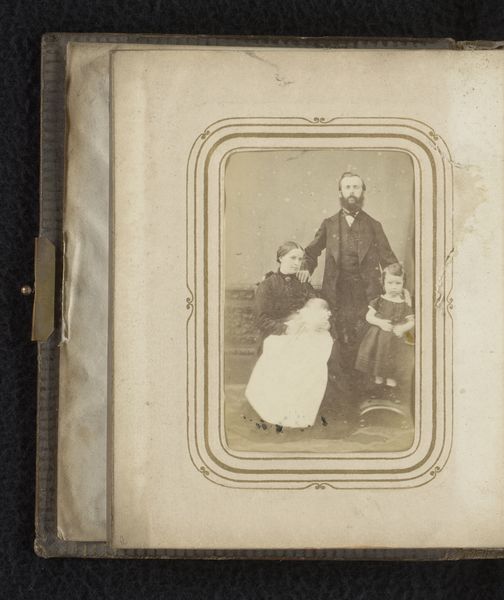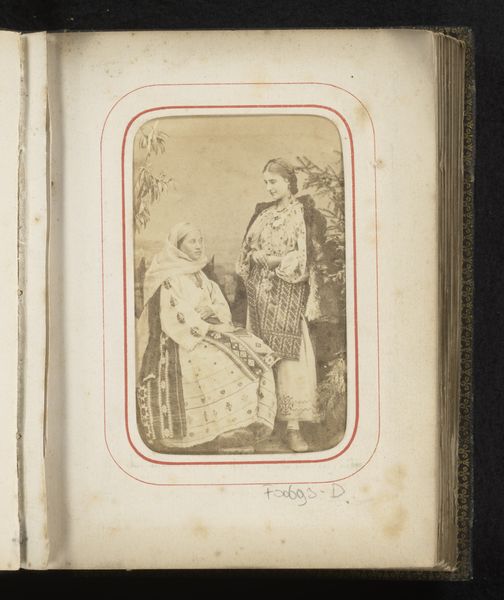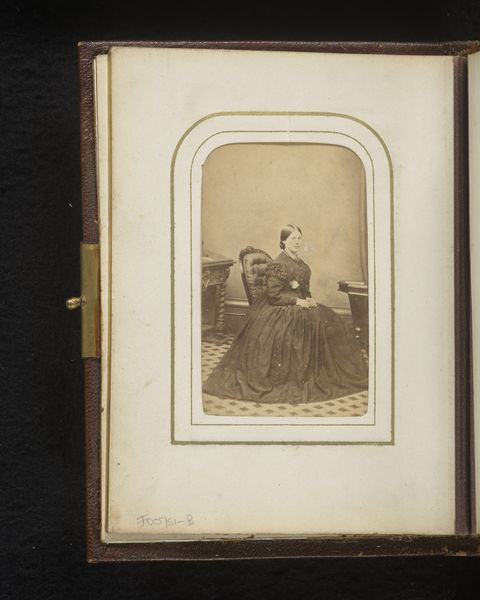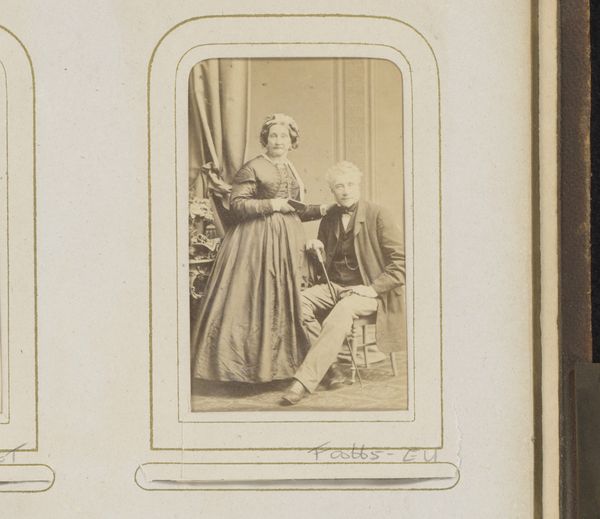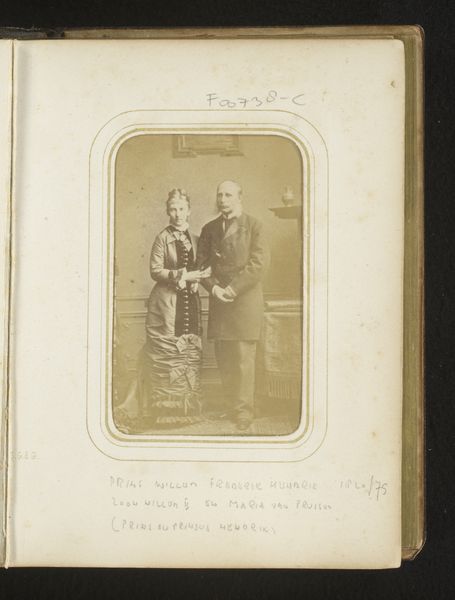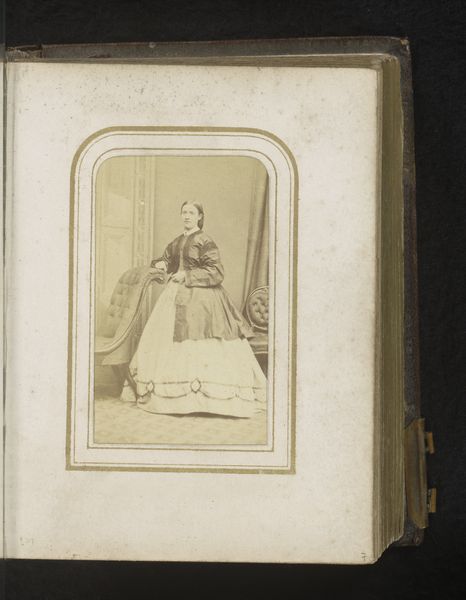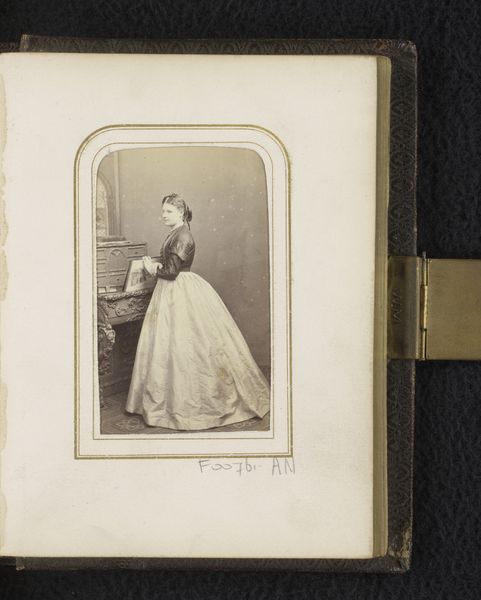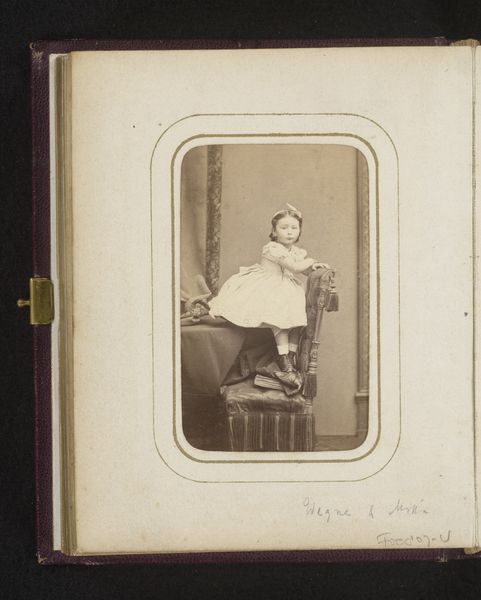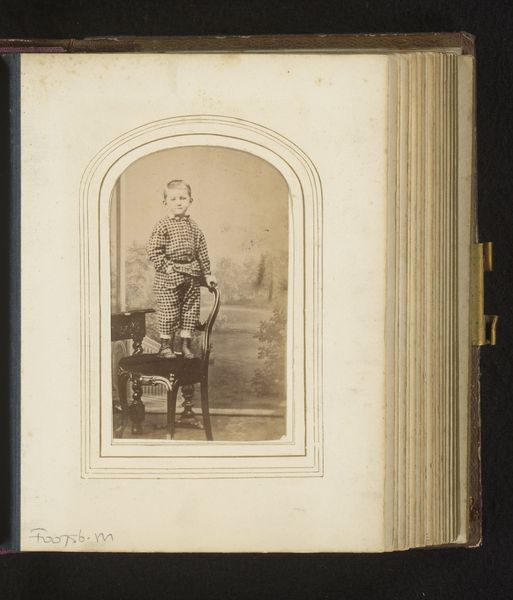
Portret van een staande man met bakkebaarden en een zittende vrouw 1855 - 1880
0:00
0:00
photography
#
portrait
#
photography
#
coloured pencil
#
genre-painting
Dimensions: height 86 mm, width 52 mm
Copyright: Rijks Museum: Open Domain
Curator: Here we have a photograph attributed to Marie-Alexandre Alophe, "Portret van een staande man met bakkebaarden en een zittende vrouw," dating from about 1855 to 1880. It’s part of the Rijksmuseum collection. Editor: It's quite striking! The composition, with the standing man and seated woman, creates a formal yet intimate mood. The framing almost resembles a stage. Curator: Indeed. Such portraits, during this period, reinforced social standing and familial bonds, offering a window into bourgeois society. The stiffness reflects not just photographic limitations but also performative roles. Editor: I notice the stark contrast between the man's dark suit and the woman's ornate dress. It guides my eye across the plane, yet it introduces a rigid, binary rhythm into the image. Curator: These sartorial choices communicated status. The man’s business attire signifies his public role, whereas her elaborate dress marks domestic responsibility. Such portraits served a cultural function. Editor: And it has a curious surface quality. While distinctly photographic, it presents almost graphic or painterly lines, giving it an abstract depth I am attracted to. It's an image negotiating different techniques and styles. Curator: Absolutely. Photographers in this period sought validation as artists, leading to aesthetic techniques to emulate paintings. Consider the influence of the burgeoning art market on photography’s self-perception. Editor: That golden-line border around the image, its very presentation, signals this intention; it wants to be a painting, while being itself at the same time. Curator: Yes, presentation played a significant role. Display in homes solidified status and family legacy. It reveals insights into identity formation during this transformative era in photographic practices. Editor: On reflection, the tonal values are striking. These greyscale and sepia ranges contribute to the picture's subtle impact. Despite its simplicity, I am touched by the richness and formal skill with which the artist constructed the picture. Curator: Considering this image within the history of photographic portraiture makes one think of the complicated interaction between technological development, cultural values, and art production. Editor: I agree, seeing it through that historic framework offers such unique depth, compared to its striking surface and formal techniques. Thanks for that.
Comments
No comments
Be the first to comment and join the conversation on the ultimate creative platform.
